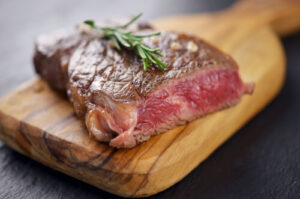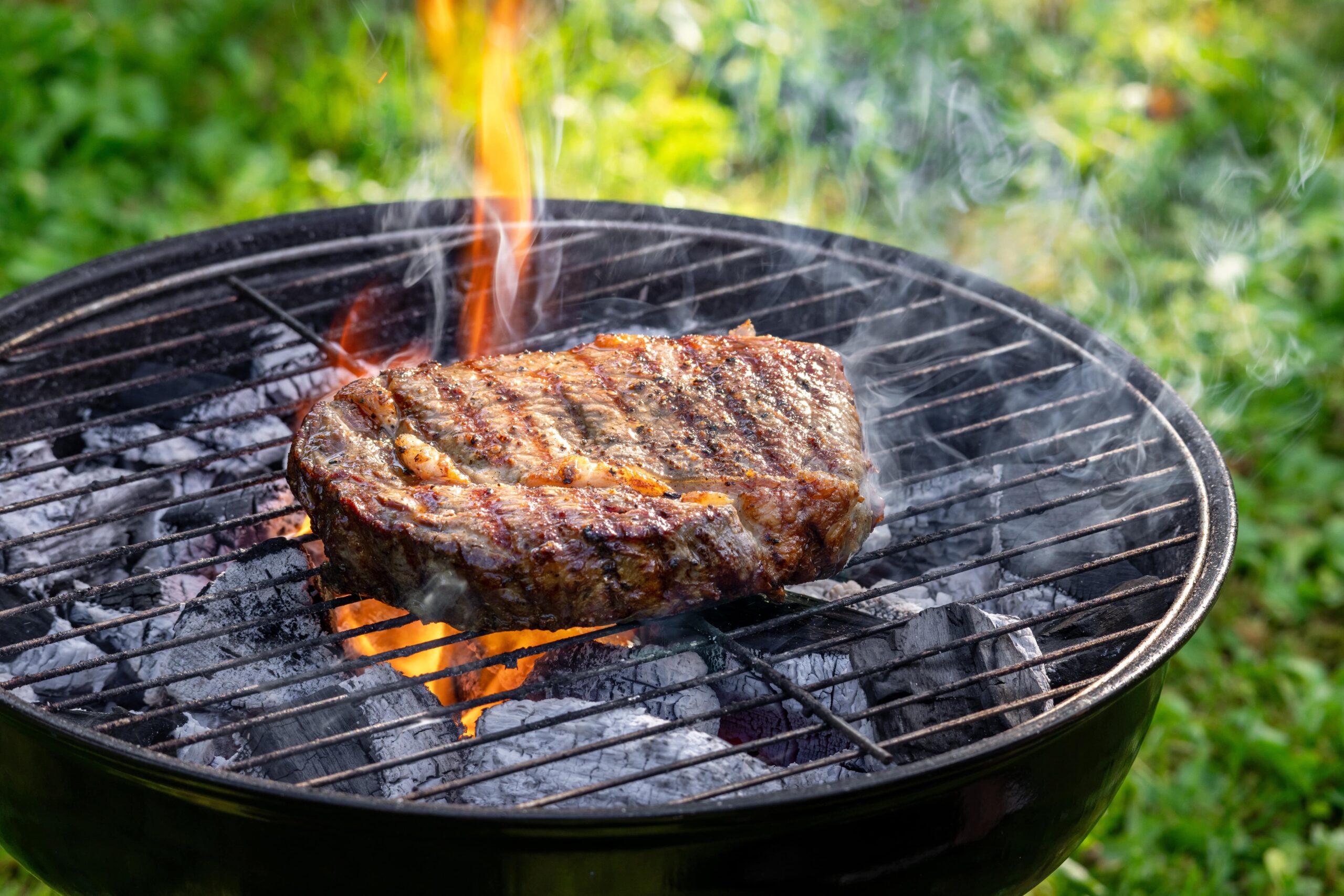Steak stands alone in the culinary world as a meat that’s not only acceptable but often preferred when undercooked. From the succulent juiciness of a medium-rare ribeye to the melt-in-your-mouth tenderness of a rare filet mignon, steak lovers have long embraced the nuances of color and texture that come with less cooking time.
But why is steak different? Why can we indulge in a “bloody” steak while shying away from other undercooked meats?
Taste and Texture
 The captivating allure of an undercooked steak lies in the transformative power of heat. Cooking, at its core, is a series of chemical reactions that fundamentally alter the meat’s structure and composition.
The captivating allure of an undercooked steak lies in the transformative power of heat. Cooking, at its core, is a series of chemical reactions that fundamentally alter the meat’s structure and composition.
When subjected to high temperatures, the proteins within the steak begin to denature. Think of it like carefully arranged protein strands uncoiling and tangling together, like a meticulously organized yarn collection thrown into disarray. This entanglement causes the muscle fibers to contract and squeeze out moisture, resulting in a firmer, denser texture. A well-done steak, while undeniably cooked through, often sacrifices its tenderness and juiciness in the pursuit of thoroughness.
Rare and medium-rare steaks, however, tell a different story. By limiting their exposure to high heat, these steaks retain a significant portion of their natural moisture. This not only contributes to an incredibly tender, almost buttery texture, but also allows the full spectrum of flavors to shine through. Each bite bursts with savory juices, a symphony of taste that’s been preserved rather than evaporated.
Then, as the steak’s surface meets the scorching heat of the grill or pan, a fascinating chemical ballet known as the Maillard reaction takes center stage. Amino acids and sugars within the meat react, creating a cascade of new flavor compounds. This is responsible for the deeply browned crust, the complex aromas that waft from the steak, and the rich, umami notes that dance on your palate.
The beauty of an undercooked steak lies in the harmony of contrasts. The crisp, flavorful crust yields to a tender, juicy interior. It’s a culinary masterpiece that celebrates both the transformative power of fire and the inherent deliciousness of the beef itself.
The Steak Safety Advantage
When it comes to food safety, undercooked meat often raises concerns, and rightfully so. Bacteria like E. coli and Salmonella, known culprits of foodborne illness, are typically found on the surfaces of raw meats. However, steak possesses a unique advantage in this arena.
A whole-muscle steak’s solid structure acts as a natural barrier against the inward migration of bacteria. This means that the harmful pathogens primarily reside on the exterior, leaving the interior relatively pristine. When a steak is seared at high temperatures, the intense heat effectively eliminates these surface bacteria, rendering the steak safe for consumption even when the center remains undercooked.
Ground meats, unfortunately, don’t enjoy the same structural integrity. The grinding process not only breaks down the meat’s fibers but also has the potential to spread surface bacteria throughout the entire mixture. This significantly increases the risk of contamination and necessitates thorough cooking to ensure safety.
Pork presents another scenario where thorough cooking is non-negotiable. Trichinella spiralis, a parasitic worm that can be present in pork, poses a risk if the meat is consumed raw or undercooked. The high temperatures reached during cooking effectively kill the parasite, ensuring the meat is safe to eat.
Understanding these distinctions is key to navigating the world of undercooked meats safely. Steak’s unique combination of solid structure and susceptibility to surface sterilization allows for a culinary adventure that’s both delicious and reassuring.
Temperature | Finding Your Perfect Steak
While “rare” and “medium-rare” are common terms, steak doneness is ultimately a personal preference.
- Blue/Extra-Rare: This steak is barely seared on the outside, with an internal temperature around 115°F (46°C). It’s incredibly soft and almost raw in the center.
- Rare: This steak has a warm red center and an internal temperature around 125°F (52°C).
- Medium-Rare: Often considered the “sweet spot” for steak, this has a warm pink center and an internal temperature around 135°F (57°C).
- Medium: A medium steak has a hint of pink in the center and an internal temperature around 145°F (63°C).
- Medium-Well: A medium-well steak is mostly brown throughout, with a hint of pink, and an internal temperature around 155°F (68°C).
- Well-Done: A well-done steak is brown throughout and has an internal temperature of 160°F (71°C) or higher. It can be less juicy than other levels of doneness.
When It Comes to the Perfect Steak, Sourcing Is Everything
To truly experience the joy of a perfectly cooked steak, it’s essential to choose your steakhouse carefully. A reputable establishment, like Y.O. Ranch Steakhouse, prioritizes sourcing high-quality meats from trusted suppliers and adheres to strict safety standards. Our chefs are experts in the art of steak cookery, ensuring that your steak is prepared precisely to your liking.
Steak isn’t merely a meal; it’s an experience! Understanding the reasons behind its unique tolerance for undercooking opens up a world of flavor and texture possibilities. Whether you prefer your steak rare, medium-rare, or even blue, there’s no denying the unique appeal of this culinary classic.
Ready to embark on a steak adventure? Visit Y.O. Ranch Steakhouse and let our expert chefs guide you through the world of steak doneness. Whether you’re a seasoned steak connoisseur or a curious newcomer, we’re here to create an unforgettable dining experience for you.




